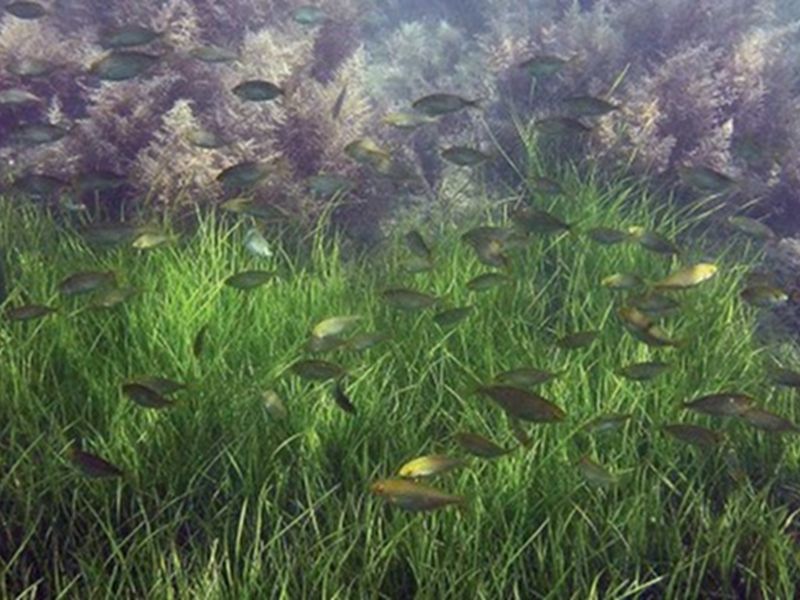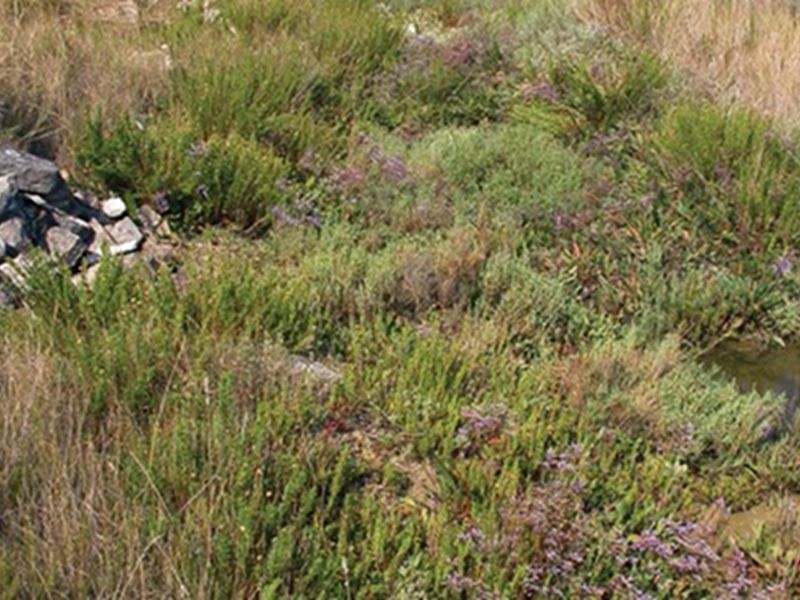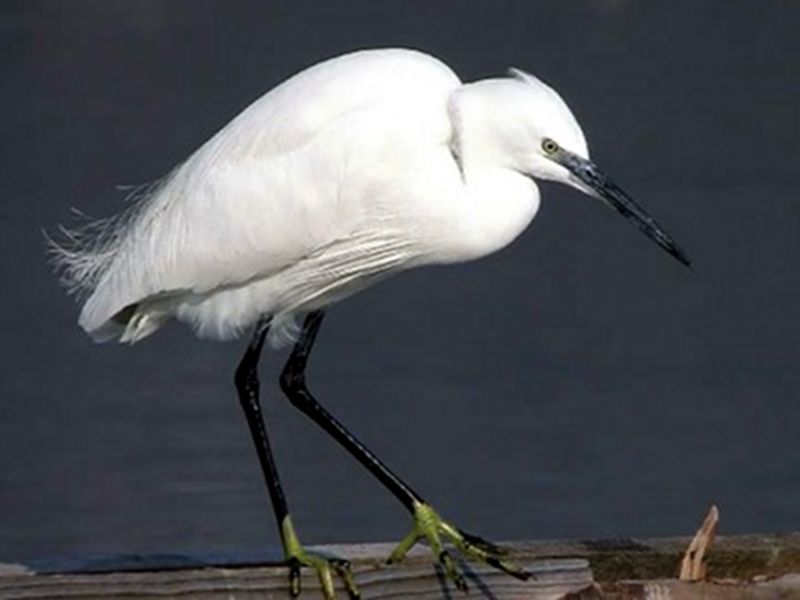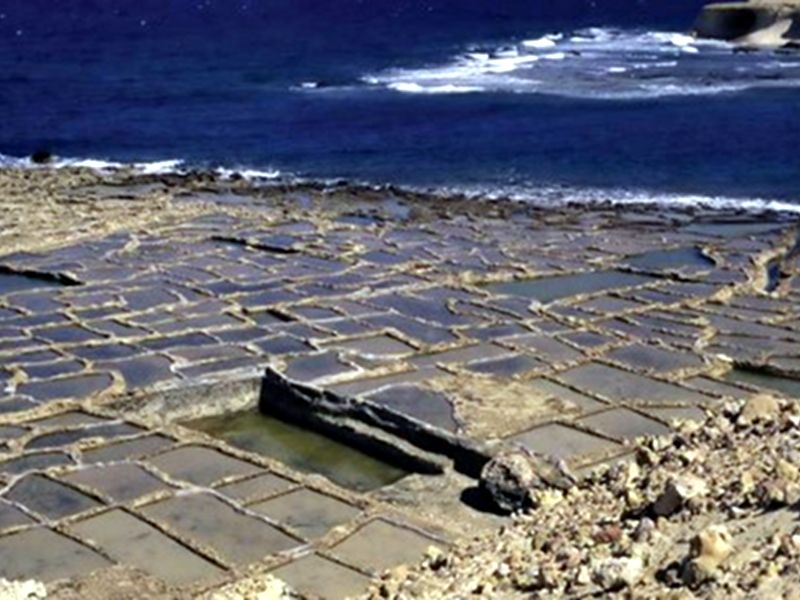Protected Area
Identity Card
- Land Surface Area: 700.00 ha
- Country: Slovenia
- Park Authority: Krajinski park Sečoveljske soline
The Park's northern part, where salt production is still active, is called Lera. The Drnica stream separates it from the southern part of the Park, called Fontanigge.
Habitats
At Lera, different plant and animal habitats are determined by differently saline salt-fields, salt-pan channels and levees.
Fontanigge features a higher habitat diversity, such as reed beds, halophyte meadows, dry and bare or partially overgrown basins, islets in salt-pan basins, mudflats, and different habitat types on the banks. The remains of salt-pan houses, too, are highly inviting for some animal and plant species. The Fontanigge area is enclosed by shrubbery as well as dry and wet karst meadows, while the sea embankments in the west are being washed by the shallow sea.
Halophyte plants
Characteristic of saline ground in the pans are halophytes or salt-loving plants, which withstand or need high salt concentrations.
We can usually find them in places where rivers or streams flow into the sea, and in salt-pans.
At Lera, halophytes strive especially on the edges of salt-fields and in ditches. A salt basin is only rarely covered by a pioneer association of Marsh Samphire (Salicornia). The Fontanigge area is botanically more interesting, with its genuine halophyte meadows, where Glasswort usually prevails in the company of Sea Purslane and Common Sea-lavender. The edges of the former basins and ditches are overgrown by the Absinth Artemisia caerulescens. Along the ditches, separate bushes of Glasswort and Annual Sea-blite can also be found. The banks of salt-pan channels are overgrown by Golden Samphire.
As a rule, halophytes have lignified leaves and stems, for they suffer droughts when water is not accessible to them.
The most attractive halophyte is the Common Sea-lavender with its tiny purple flowers and salt glands on its leaves. More information
Fauna
So far, 291 bird species have been recorded at the Sečovlje salt-pans, which constitute a large water body, used by the birds as their roosting site or wintering grounds. When water bodies began to be cleared due to the ever-increasing urbanisation in Slovene Istria as well as in the whole Mediterranean, the Sečovlje salt-pans gained increasing significance as a bird sanctuary. A great role in this respect has also been played by the abandoned salt-making in the southern half of the pans. The salters indeed stopped gathering salt there, but they still maintained the levees, regulated the water level in salt basins and thus conserved the different natural living environments. An important role has also been played by the processes of natural forces, which formed a series of similar but different enough environments, which have been eventually inhabited by birds with different dietary and breeding demands. Seawater, which runs deep into the pans through salt-pan channels, brings to the basins large amounts of food that can be easily reached by birds in the shallow basins of the abandoned part of the pans.
Although important, birds are not the only saltwork inhabitants, where numerous small animals live both on the ground and in the water; for many of them, this is the only living place in Slovenia.
Salt production
The cultural heritage of Piran salt-pans embraces the centuries-old life and work of the salters on the NE coast of the Adriatic Sea. Of the once numerous salt-pans in the Gulf of Trieste, only those at Sečovlje and Strunjan have been preserved; their testimonial value is thus even greater, placing them among the ethnological, technical, historical and landscape heritage of exceptional concern.
This heritage includes the salt-fields, channels and banks with stone walls, steps and sluices, salt-pan houses with their immediate surroundings, paths, bridges, pumps, etc. The Strunjan and Sečovelje salt-pans are the only pans along the eastern coast of the Adriatic Sea, where the whole process of salt-making is done with traditional methods, through daily gathering in brine on the biosediment - the petola.
For centuries, the Northern Adriatic salt-pans exerted a great impact on the economy of cites in this region. They were often the subject of political disputes and wars, as salt was a valuable raw material, important for food conservation and for the production of gunpowder. In the Gulf of Trieste and Istria, there used to be, besides the Old Piran salt-pans at Sečovlje, Lucija and Strunjan, several smaller and larger pans (such as Muggia, Koper and Izola). They were marked not only by political and economic interests, but also by the ups and downs of nature, which at times totally prevented salt-making for long periods, or permitted it with superabundance at other times.
Salt is made in salt-fields, consisting of evaporation and crystallisation basins. Seawater falls from evaporation to crystallisation basins, or is conveyed by pumps. At Fontanigge, the pumps used to be worked by wind wheels, while at Lera the Austrians introduced, about a hundred years ago, a modernised procedure with the use of motor pumps.










